As multifaceted entrepreneur Donald Trump officially enters a presidential election otherwise populated by woefully self-serious characters, many will attack the Apprentice maestro for his history of risk-taking. It has already happened every other time Trump has contemplated a presidential run.
You’ll hear about how Trump has hair and is an unspecified genre of “clown.” You’ll hear that earning $20 million makes Trump somehow poor and a business failure (ahem). You’ll hear about the Apprentice, the magical television realm that can make mortal enemies out of Geraldo Rivera and that one Jonas brother you forgot about. In passing, you might hear about The Game.
Contain your excitement: Donald Trump does, indeed, have his own board game. As one would expect, the game involves snatching up some real estate properties, investing in favors and commodities, and trying to take your competitors’ money in the most obnoxious way possible. The original 1988 ad gives away little about The Game:
Time Magazine declared The Game “a failure” in 2011, claiming it was “vastly underselling” expectations in 1990. Pair of Dice Paradise, a website that reviews board games, wrote this illustrious review of The Game: “No matter your opinion of Trump, the man, everyone agrees that Trump: The Game is a thing that exists.”
In 2015, The Game very much still exists–in thrift shops and eBay listings nationwide. Your authors were fortunate enough to snatch up some copies and play, and discover the buried lead about Trump: The Game that everyone reviewing it has missed: it is incredibly, infectiously fun.
The Game is, to put it simply, Monopoly–but much more cutthroat and less dependent on fate and inertia. It plays as, in essence, two games: in one game, you amass properties and “Trump Cards,” which allow you to collect funds on various properties, tax your competitors, cheat your way to winning properties on lowered bids, and save yourself should someone use a card to sabotage you.
A note on the die: it has six sides, but it is only numbered from 1 to 5. The sixth facet is a “T,” and if a player rolls T, he or she takes a Trump Card and rolls again.
This portion of the game is simpler than Monopoly in that only eight properties are available for purchase. Instead of landing on a specific tile and paying a fixed amount for the property there, the process requires much more deliberation. The board forces players to increase the value of the properties as they land on each one (actually stuffing money inside the property’s icon, coffin-shaped with a ballot box slot) and one player must land on a specific tile initiating a property sale. The player can choose to buy any property, but all of his or her competitors also get to bid on it.
The second game is a card game. Once all the properties are spoken for, the board game is no longer used. Players have two options on their final turns: play a Trump Card, or make a deal. The deals can be as simple as trading a property for a property, offering money to buy a property, or offering to buy or trade Trump Cards.
The person with the most money at the end of the game wins. Trump wouldn’t have it any other way.
The game’s most significant advantage is that it is designed first and foremost for the enjoyment of the player. You can almost hear Trump asking the gamemakers to design whatever they wanted, “as long as it isn’t boring.” Yet it’s remarkable to read through the instruction manual and hear how much of Trump’s voice comes through–and how much it hasn’t changed, compared to his bombastic Twitter feed today. He is just so excited about “making the deals” and so unforgiving toward losers (he goes out of his way to declare no leniency for players who forget to take a Trump card before performing an action on the board).
Consideration for the average human attention span is the game’s greatest strength: the board game half ends just as you begin to tire of rolling the die, and the card game half ends when all parties “pass” on their turns instead of playing cards or making deals–in other words, when everybody wants to stop playing, not after a grueling and unsurprising elimination process.
There are two keys to winning the game: putting money first, and using two key cards properly. The first seems obvious but, given the Monopoly-esque nature of the first half of the game, it is easy to get caught up in amassing property. This was Frances’s fatal error: while my competition (my boyfriend, who deserves applause for graciously accepting spending an entire Thursday night playing Trump: The Game instead of doing literally anything else) racked up dollars and bowed out of bids gracefully, I was having too much fun using my Trump Cards to kick him out of bids to realize how much I was spending. I lost by some $400 million.
Real estate is only marginally important, because it stops acquiring value once the board game phase of the game ends. Some board spots make you pay taxes to the property, which attach to them and raise their value. And some Trump Cards reward you for having those properties.
But this isn’t Monopoly, and your property won’t yield dividends after the board game ends save for your Trump cards. In fact, your property ownership is never a done deal, as several Trump cards and tiles on the board can rob you of ownership just like that.
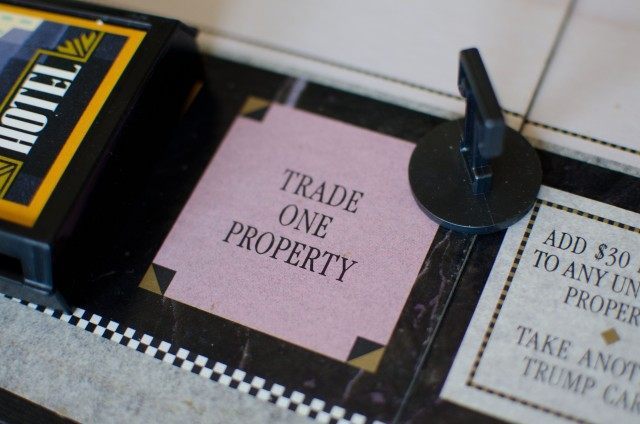
Landing here could help or hurt you, depending on how much cash is inside the property you get for the trade.
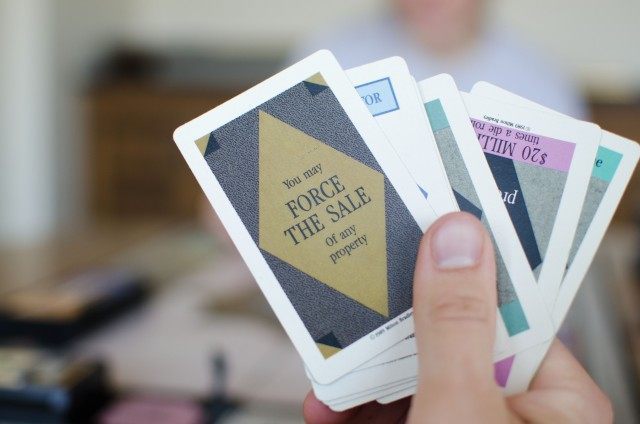
However, if someone plays this card on you, it can only hurt. You either lose the property or have to sacrifice cash/Trump cards to save it.
The game values cash in hand much more than it does real estate investments, a wise bit of advice that would have been more useful in 2008 than 1988.
The second key to winning the game is using those cards properly. The two most powerful cards allow you to kick someone out of bidding for a property (“You’re out of the bidding!”) and return to bidding once you have been kicked out (“I’m back in the bidding!”). This is the most entertaining and obnoxious aspect of the game.
It is so fun to kick someone out of bidding–especially if for no reason, when you know they couldn’t pay for the property anyway–that there is serious meme potential here. For maximum fun, try playing the “You’re Out of the Bidding” card when there aren’t any properties up for sale, or toss it at someone when they make a bad joke. It’s like a red card in soccer, but even more annoying, because there’s no referee.
Same with “I’m back in the bidding!” If you and your competitor have amassed enough of each, bids can stay stagnant for several rounds with both players tossing the cards back and forth at each other. A losing player can disturb the game by tossing it at someone who is smack-talking. You can post a photo of the card to your Instagram when your ex accepts a dinner date “to make sure we’re still cool.” You can tweet it at Trump for officially throwing his hat in the 2016 ring.
A final note on the differences between Trump: The Game and Monopoly: nothing could better illustrate Trump’s own worldview, in an impassioned defense of capitalism, than the difference in these games’ mechanics. In the dystopian world of Monopoly, someone only wins if everyone else loses–and, again, it’s mostly through chance and ending up in the right spot at the right time. This Depression-era indictment of big banks and wealth tells the player that the only way to get ahead is at others’ expense.
Yet in Trump’s game world, everybody gets ahead. Even the “losers” are still hundreds of millions of dollars richer–and by their own skill, not fate. The pie has grown… and so have you. And this is the correct view of America, of capitalism, that kids should be learning. And, who knows? Maybe one day they’ll hear it in an inauguration speech.
The game can be played between 3-4 players and takes between 2-4 hours to play.
All photos by Ezra Dulis / Breitbart News.
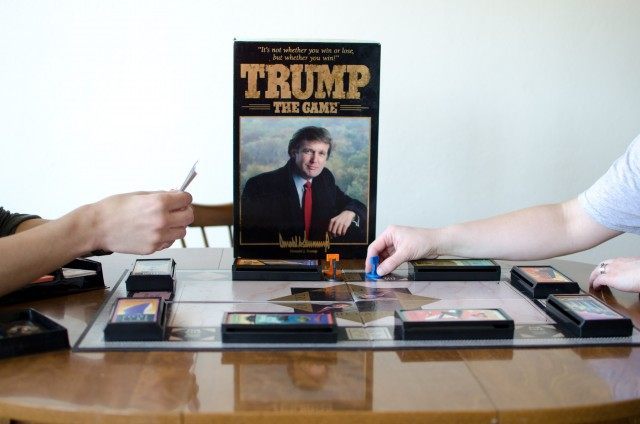
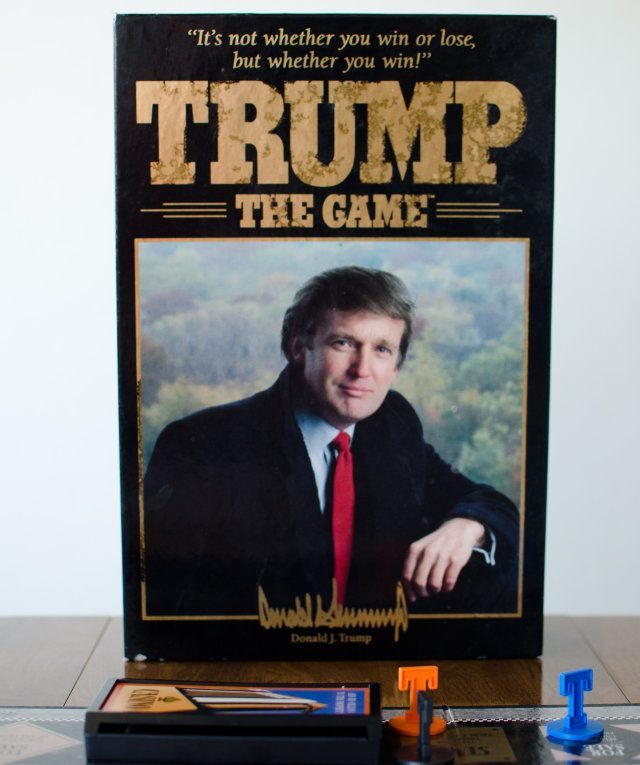
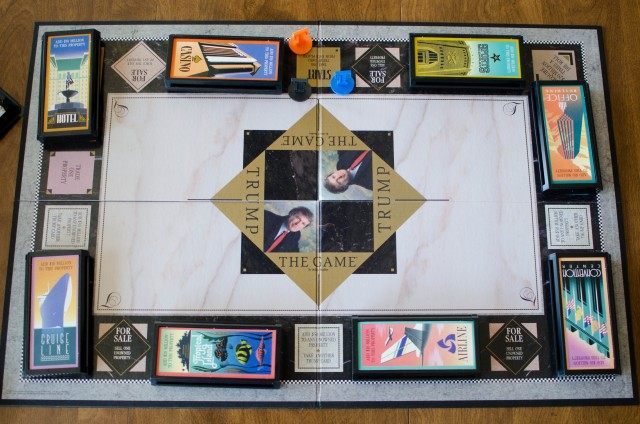


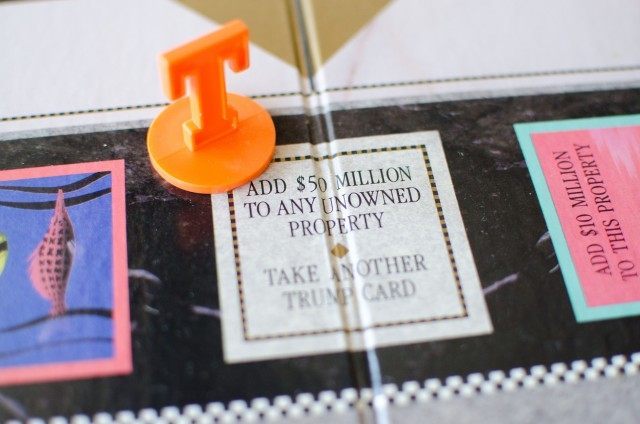
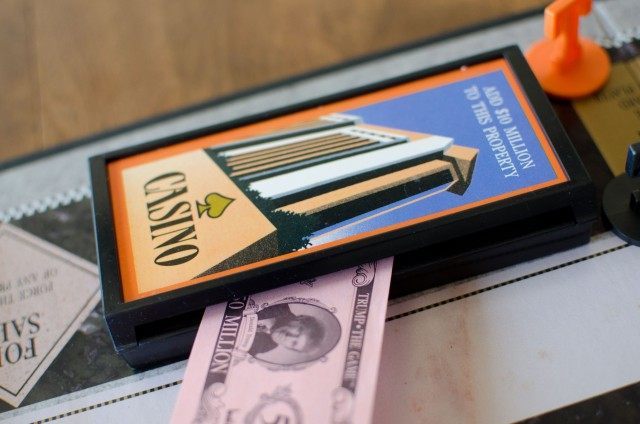
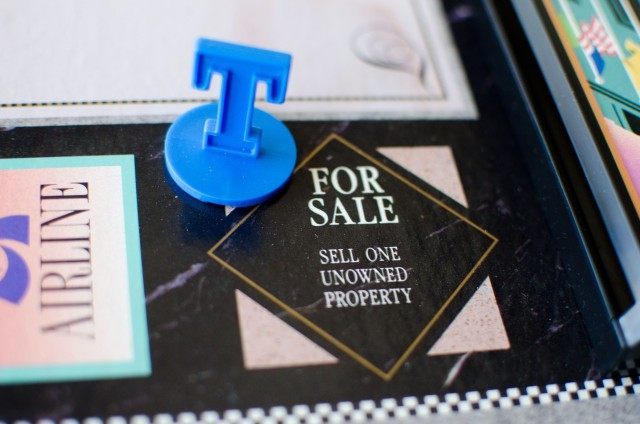
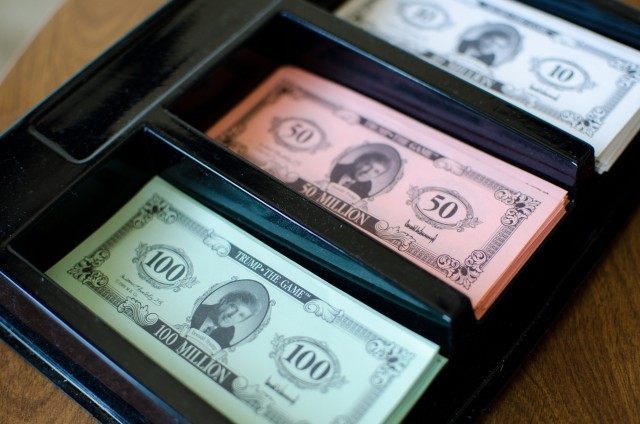

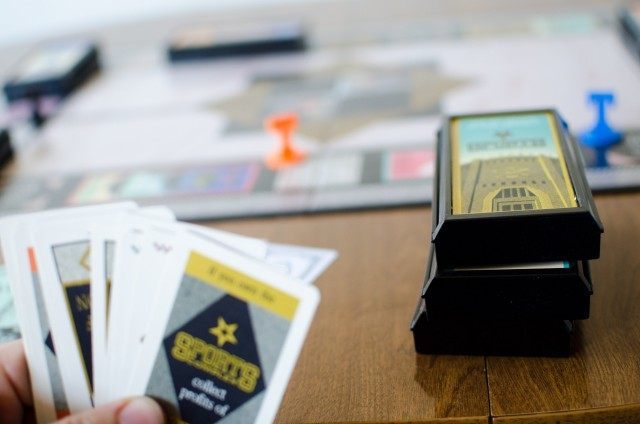
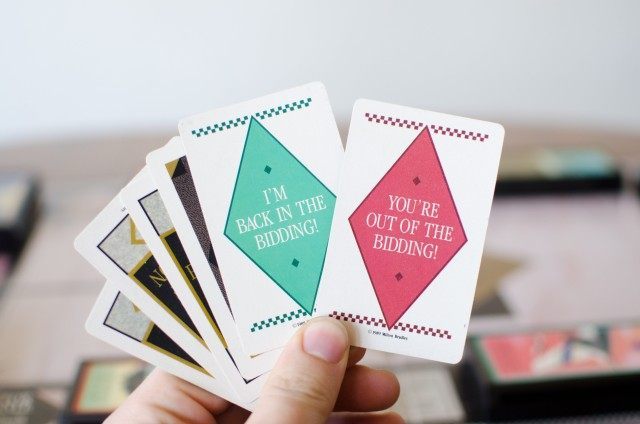
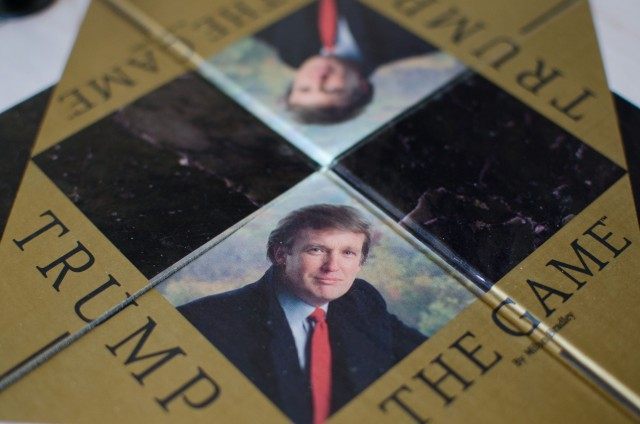
COMMENTS
Please let us know if you're having issues with commenting.